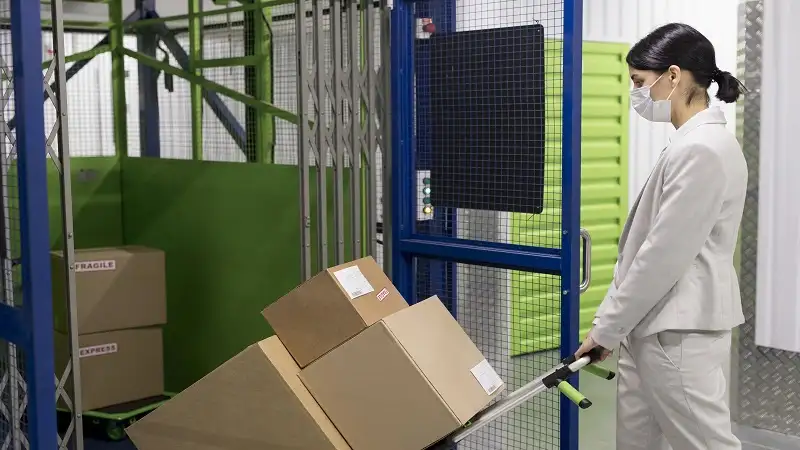Systems that keep buildings running usually exist out of sight, hidden behind walls and ceilings. Think plumbing pipes, electric wires, network cables, and HVAC ducts, which provide indoor comfort.
Now, when these systems work well, they’re easy to forget—until they malfunction. Then getting to them becomes frustrating. In the worst-case scenario, maintenance crews would need to break down walls or ceilings to find the problem.
This hassle becomes unnecessary when contractors install general-purpose access doors in the right places.
These durable panels provide a quick and easy way to reach a building’s inner workings. They simplify a facility’s upkeep by making repair and maintenance convenient.
Let’s discuss it.
What Is a General-Purpose Access Door?
A general-purpose access door is a panel installed on walls or ceilings. Its main purpose? To make it easy for technicians to reach utility systems vital to a building’s overall performance.
Access solutions speed up routine maintenance, inspection, and repairs in residential and commercial buildings. Unlike specialized access doors (like fire-rated or security panels), general-purpose access doors fit different applications.
They’re available in standard sizes and are suitable for exterior and interior use on walls and ceilings alike.
How General-Purpose Access Doors Simplify Facility Upkeep
Here’s how facilities benefit from these panels beyond access.
Reduce Downtime During Routine Inspections
Quick access means reduced downtime for commercial facilities. Unlike makeshift panels that take time and effort to open, general-purpose access doors are easy to operate.
Maintenance crews can simply open a panel and get to work in case of any issues. The result? Routine maintenance, inspections, or emergency repairs are fast and easy—no need to cut into drywall to find a faulty wire or leaky pipe.
For technicians, this means that repairs are more efficient. For facility managers, it becomes easier to schedule maintenance or conduct proactive inspections.
When repairs take little time, businesses can operate smoothly with very minimal interruption.
Support a Cleaner and More Organized Facility Layout
General-purpose access panels hide wires, pipes, and cables that can be an eyesore. Most panels have minimalistic designs that sit level with the surrounding ceilings and walls.
Unlike traditional bulky and obtrusive mounted panels, this results in a neat professional finish with cleaner lines.
Access doors can also unlock storage spaces behind walls for extra inventory, important documents, etc., helping reduce clutter in living spaces even more.
Help Extend Equipment Lifespan
Here’s how access doors and panels can help increase equipment life span.
Take HVAC systems, for instance. Simple maintenance acts—like replacing air filters or checking coils—help the system run efficiently. These checks are easier to do with access doors.
When the system runs well, it experiences less strain, reducing costly repairs or replacements down the line.
Back to routine checks, they also help facility managers find and fix issues as early as they happen. As a result, plumbing pipes, electrical components and other utilities can last longer.
Furthermore, access panels with a sturdy construction, quality seals, and insulation protect systems from external damage making them withstand the test of time. Things like dust, moisture, temperature changes or impact can cause wear.
Adapt to Different Facility Types and Layouts
Most general-purpose access doors fit different use cases and aesthetic layouts. For one, their sleek designs make them virtually disappear into walls and ceilings.
Some come with primed surfaces that you can paint, wallpaper, or texture to match any decor.
Then there are recessed panels. These can hold different finishes, such as tiles, masonry, or drywall.
Modern access door designs also have different hinge and latch options for various use cases. For instance, removable panels provide maximum clearance, and hinged panels are suitable for regular use. Lockable options, on the other hand, help prevent unauthorized access.
These features make general access doors suitable for residential, commercial, and industrial walls and ceilings.
Lower Maintenance Costs Over Time
Apart from saving time, easy access also saves money. Imagine the major repair costs that building owners incur when an HVAC system stops working or a water pipe bursts.
Catching problems early reduces big emergencies like these, leading to cost savings over time.
Additionally, since repair crews don’t have to cut into drywall, it eliminates the need for unnecessary wall or ceiling repairs.
Finally, utility bills are reduced when systems run efficiently. These all make maintenance cheaper in the long run.
Considerations When Choosing General Purpose Access Doors
When choosing a general-purpose access door, consider these factors to ensure it meets your project’s specific needs.
Location and Purpose
- Wall vs. Ceiling: Where you intend to place the door determines its design. Ceiling access doors, for example, need secure latching mechanisms to prevent them from swinging open unexpectedly.
- Interior vs. Exterior: Doors for exterior use should be weather-resistant and have proper insulation and sealing to prevent air leaks and moisture damage.
- System Type: What is the door’s purpose? Is it for plumbing access or an HVAC system? System type can influence size, material, security level, or any required fire rating.
Material and Durability
Think about the environment before choosing the material of the access door. Steel is durable, aluminum is light and corrosion-resistant, while plastics are relatively sturdy and cost-effective. Gypsum doors offer a more invisible finish since they tend to blend well with other materials.
Fire Rating and Building Codes
Installing an access door in a fire-rated wall? Choose a door that meets local building codes and has the appropriate fire rating to preserve the integrity of the fire-rated assembly.
Security and Locking Mechanisms
Some areas require a bit of security to prevent tampering or unauthorized access. Options range from simple screwdriver-operated latches to key-operated cam locks, and high-security options for sensitive areas.
Conclusion
When thinking about facility upkeep, general-purpose access doors should come to mind. These panels optimize maintenance and more. They offer quick access to hidden systems, which reduces downtime and speeds up repairs.
By installing access panels in the right places, you can also help extend the life of sensitive equipment like HVACs and lower your maintenance costs in the long term. And they’re versatile enough to be used in industries, commercial buildings, and even residential projects.

